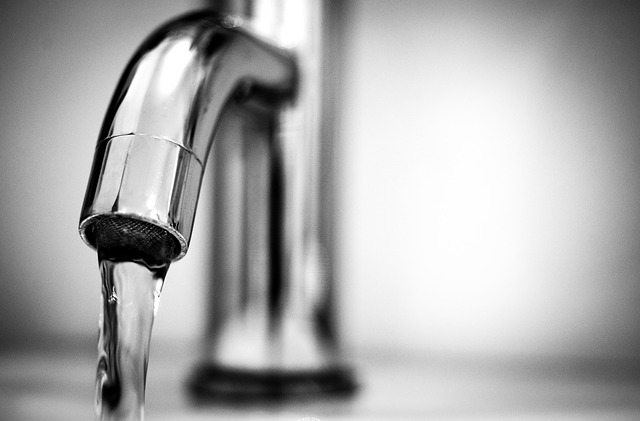Leaks in buildings
The term ‘leak’ refers to the accidentally loss or admission of something through a hole, crack, or some other permeability. It most commonly relates to liquids or gases, but might also refer to some solids that can behave in a fluid manner, such as sand.
In the construction industry, leaks might refer to:
- Penetrating damp, allowing moisture through roofs, walls, floors, windows and so on. This can cause decay to the building fabric, mould growth, mildew and so on. For more information see: Penetrating damp in buildings.
- Leaking pipework, such as water pipes, refrigeration pipes, gas or oil pipes, drainage pipework and so on. For more information see: Pipework defects, ventilation and airflow rates.
- Leaking ducts such as ventilation ducts.
- Leaking fixtures, fittings and equipment, such as taps, sinks, showers, washing machines and so on.
- Air infiltration through doors, windows and the fabric of the building, resulting in uncomfortable draughts and inefficiencies in heating, cooling and ventilation systems. The building regulations now require air permeability testing to prove that infiltration into new buildings is low. For more information see: Draughts in buildings and Air tightness in buildings.
- Failure of flood defences or drainage.
Leaks can result from:
- Poor workmanship, including poor repairs.
- Defective products or components, or failure of products or components (in particular problems with joints).
- Incorrect specification or design.
- Movement, such as settlement, thermal expansion and so on.
- Environmental influences such as wind, flood (and drainage problems), freezing and so on.
Because of the tendency for leaking materials to move, leaks can be difficult to detect, and their causes can be difficult to trace and rectify.
Leaks that go unrepaired can result in significant losses. A tap leaking just once every 6 seconds can discharge almost 100 litres in a month. In a review of water company performance published in 2019, it was reported that 3.17 billion litres of water leaks from the water distribution network every day in England and Wales (Ref https://wwtonline.co.uk/news/ccwater-criticises-three-companies-over-leakage).
Leaking water or mains gas can be very damaging and sometimes dangerous, whilst leaks of some refrigerants, oil and so on can be damaging to the environment.
When repairing leaks, it is important to identify the actual source of the leak, and to repair the problem that has caused it before repairing any of the subsequent damage that may have resulted from the leak.
NB Leakage can also refer to '...the leakage of benefits intended for a recipient group or area into another group or area.' Ref The Green Book, Central Government Guidance On Appraisal And Evaluation, Published by HM Treasury in 2018.
Note The 2020 Green Book suggests ‘Leakage is the extent to which effects “leak out” of a target area into others e.g. workers commuting into other areas to take up new employment opportunities.’
[edit] Related articles on Designing Buildings
- Air tightness in buildings.
- Approved document L.
- BREEAM Water leak detection.
- Damp in buildings.
- Draughts in buildings.
- Fit testing.
- How to waterproof a rooflight.
- Let us evolve our buildings from being passive structures to interactive and reactive systems.
- Penetrating damp in buildings.
- Pipework defects, ventilation and airflow rates.
- Refrigerants.
- Roofing repairs.
Featured articles and news
RTPI leader to become new CIOB Chief Executive Officer
Dr Victoria Hills MRTPI, FICE to take over after Caroline Gumble’s departure.
Social and affordable housing, a long term plan for delivery
The “Delivering a Decade of Renewal for Social and Affordable Housing” strategy sets out future path.
A change to adoptive architecture
Effects of global weather warming on architectural detailing, material choice and human interaction.
The proposed publicly owned and backed subsidiary of Homes England, to facilitate new homes.
How big is the problem and what can we do to mitigate the effects?
Overheating guidance and tools for building designers
A number of cool guides to help with the heat.
The UK's Modern Industrial Strategy: A 10 year plan
Previous consultation criticism, current key elements and general support with some persisting reservations.
Building Safety Regulator reforms
New roles, new staff and a new fast track service pave the way for a single construction regulator.
Architectural Technologist CPDs and Communications
CIAT CPD… and how you can do it!
Cooling centres and cool spaces
Managing extreme heat in cities by directing the public to places for heat stress relief and water sources.
Winter gardens: A brief history and warm variations
Extending the season with glass in different forms and terms.
Restoring Great Yarmouth's Winter Gardens
Transforming one of the least sustainable constructions imaginable.
Construction Skills Mission Board launch sector drive
Newly formed government and industry collaboration set strategy for recruiting an additional 100,000 construction workers a year.
New Architects Code comes into effect in September 2025
ARB Architects Code of Conduct and Practice available with ongoing consultation regarding guidance.
Welsh Skills Body (Medr) launches ambitious plan
The new skills body brings together funding and regulation of tertiary education and research for the devolved nation.
Paul Gandy FCIOB announced as next CIOB President
Former Tilbury Douglas CEO takes helm.
UK Infrastructure: A 10 Year Strategy. In brief with reactions
With the National Infrastructure and Service Transformation Authority (NISTA).























